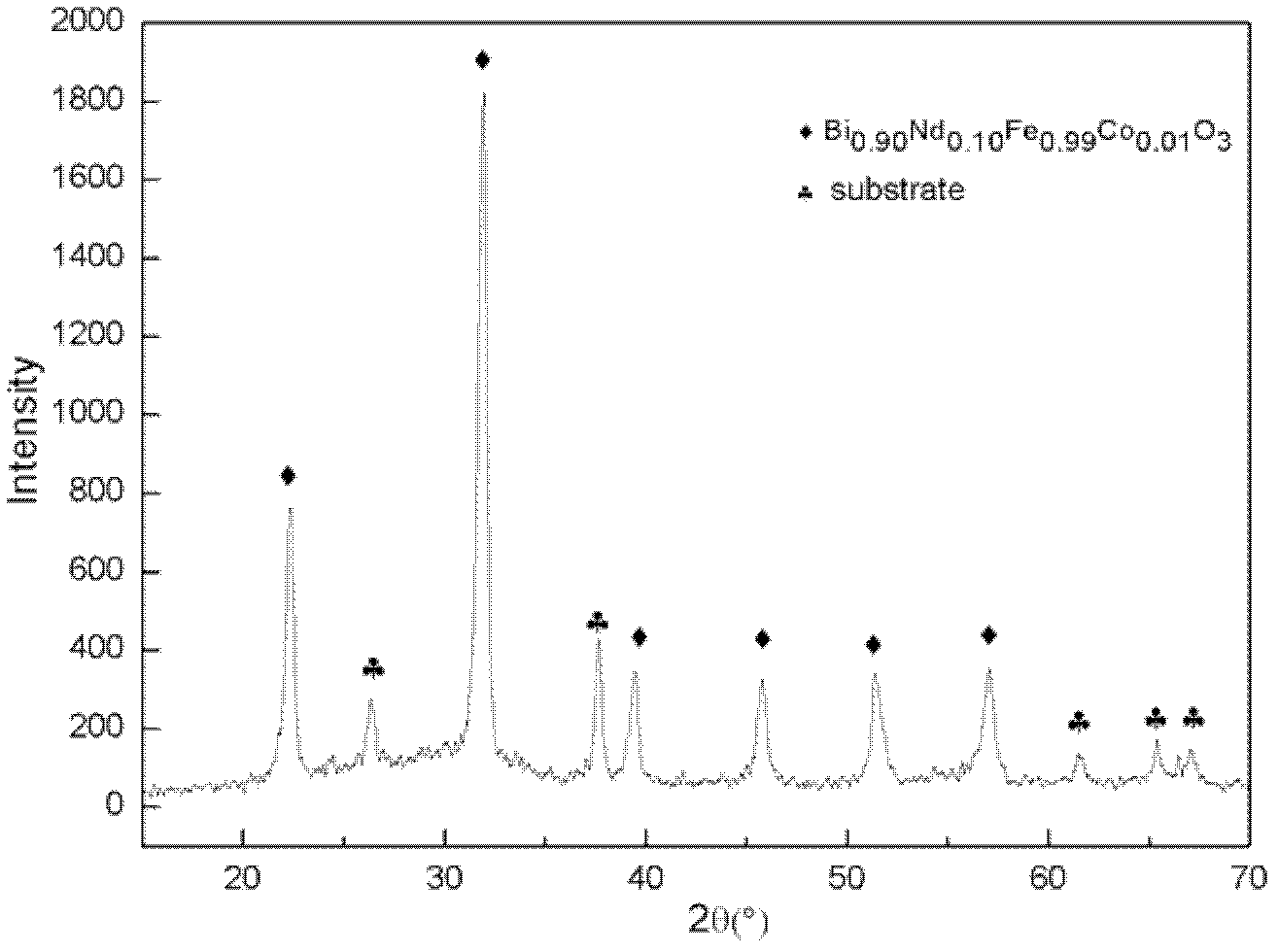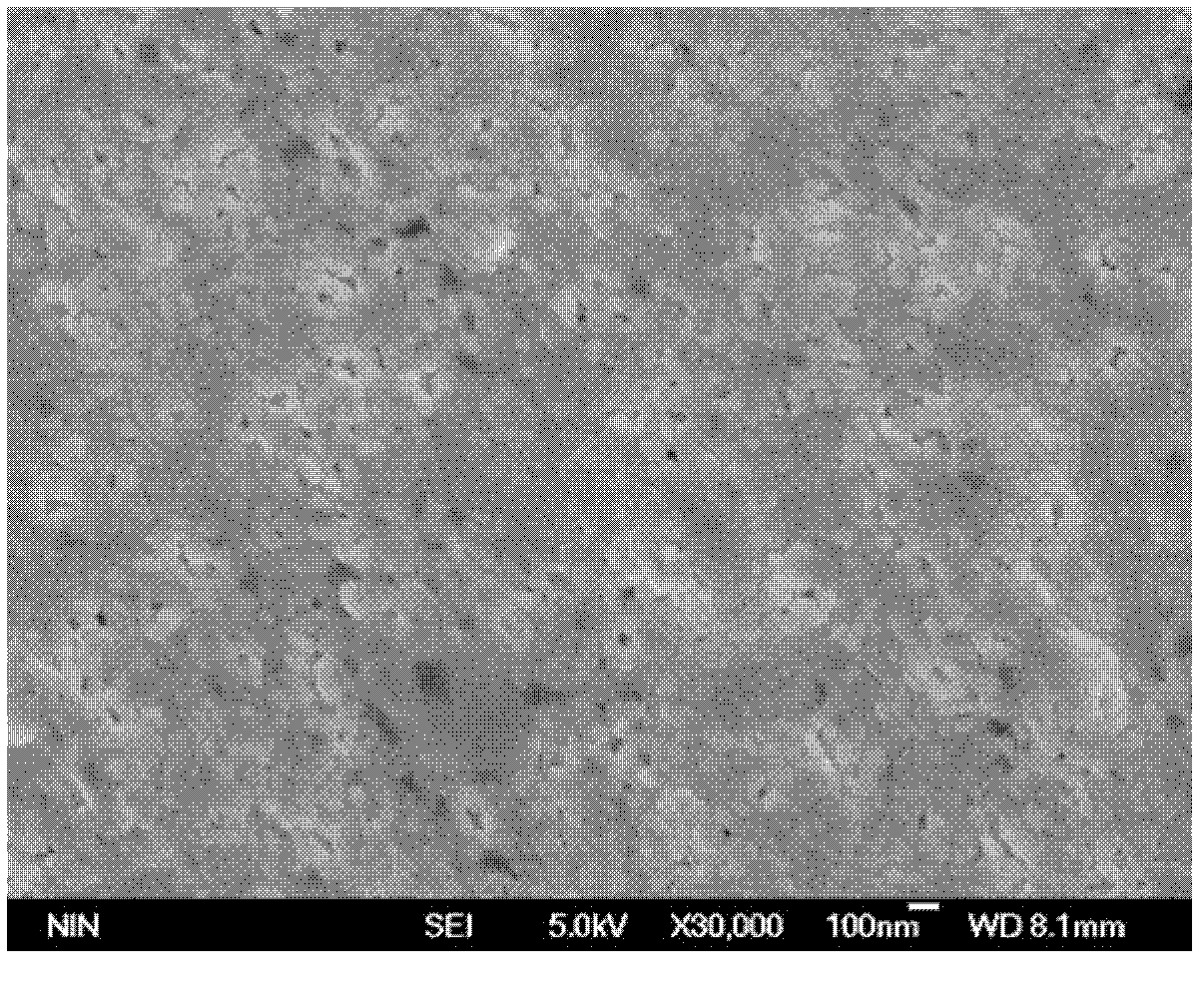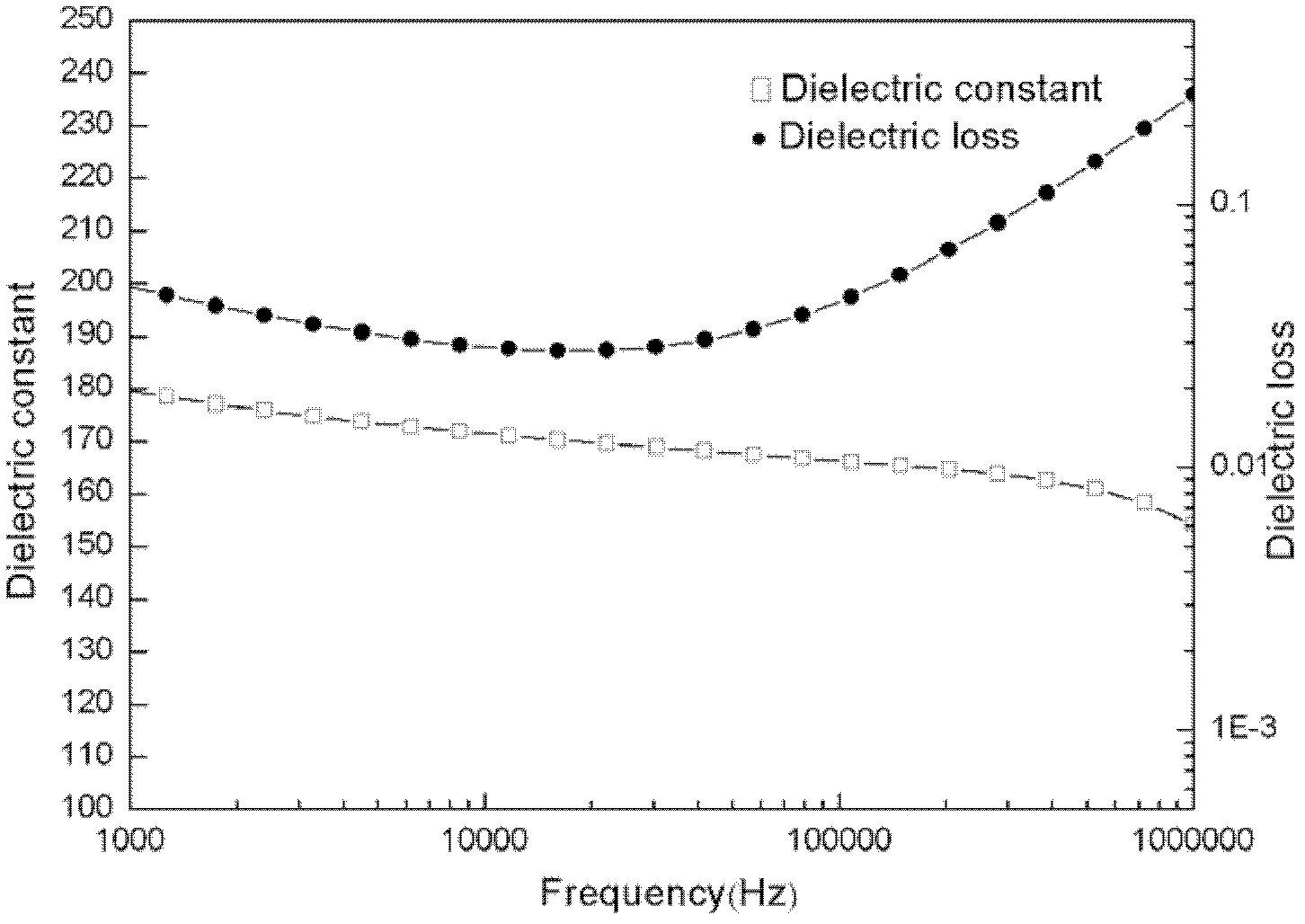Method for preparing Nd/Co-codoped BiFeO3 film on FTO (fluorine-doped tin oxide)/glass substrate surface
A substrate surface, thin film technology, applied in solid-state chemical plating, metal material coating process, coating and other directions, can solve the problems of unsaturated hysteresis loop, limited application, large leakage conductance, etc., and achieve doping The effect of easy control of quantity, improved dielectric properties, and simple equipment requirements
- Summary
- Abstract
- Description
- Claims
- Application Information
AI Technical Summary
Problems solved by technology
Method used
Image
Examples
Embodiment 1
[0028] Step 1: Select the FTO / glass substrate as the substrate, place the cut FTO substrate in detergent, acetone, and ethanol for ultrasonic cleaning, rinse the substrate with a large amount of distilled water after each ultrasonic cleaning, and finally blow it with nitrogen.
[0029] Step 2: Bake the FTO / glass substrate in a 70°C oven for 20 minutes, take it out and let it stand at room temperature.
[0030] Step 3: Place the clean FTO / glass substrate in a UV irradiator for 40 minutes to make the surface of the substrate reach "atomic cleanliness".
[0031] Step 4: Bi(NO 3 ) 3 9H 2 O, Fe(NO 3 ) 3 ·5H 2 O, Nd(NO 3 ) 3 ·6H 2 O and Co(NO 3 ) 2 ·6H 2 O is dissolved in a mixture of ethylene glycol methyl ether and acetic anhydride at a molar ratio of 0.98:0.99:0.1:0.01, and magnetically stirred for 1 hour to obtain a stable metal ion concentration of 0.1-0.5mol / L BiFeO 3 Precursor solution, wherein the volume ratio of ethylene glycol methyl ether and acetic anhydride ...
Embodiment 2
[0035]Step 1: Select the FTO / glass substrate as the substrate, place the cut FTO substrate in detergent, acetone, and ethanol for ultrasonic cleaning, rinse the substrate with a large amount of distilled water after each ultrasonic cleaning, and finally blow it with nitrogen.
[0036] Step 2: Bake the FTO / glass substrate in a 70°C oven for 20 minutes, take it out and let it stand at room temperature.
[0037] Step 3: Place the clean FTO / glass substrate in a UV irradiator for 40 minutes to make the surface of the substrate reach "atomic cleanliness".
[0038] Step 4: Bi(NO 3 ) 3 9H 2 O, Fe(NO 3 ) 3 ·5H 2 O, Nd(NO 3 ) 3 ·6H 2 O and Co(NO 3 ) 2 ·6H 2 O is dissolved in a mixture of ethylene glycol methyl ether and acetic anhydride at a molar ratio of 0.98:0.97:0.1:0.03, and magnetically stirred for 1 hour to obtain a stable metal ion concentration of 0.1-0.5mol / L BiFeO 3 Precursor solution, wherein the volume ratio of ethylene glycol methyl ether and acetic anhydride i...
Embodiment 3
[0042] Step 1: Select the FTO / glass substrate as the substrate, place the cut FTO substrate in detergent, acetone, and ethanol for ultrasonic cleaning, rinse the substrate with a large amount of distilled water after each ultrasonic cleaning, and finally blow it with nitrogen.
[0043] Step 2: Bake the FTO / glass substrate in a 70°C oven for 20 minutes, take it out and let it stand at room temperature.
[0044] Step 3: Place the clean FTO / glass substrate in a UV irradiator for 40 minutes to make the surface of the substrate reach "atomic cleanliness".
[0045] Step 4: Bi(NO 3 ) 3 9H 2 O, Fe(NO 3 ) 3 ·5H 2 O, Nd(NO 3 ) 3 ·6H 2 O and Co(NO 3 ) 2 ·6H 2 O is dissolved in a mixture of ethylene glycol methyl ether and acetic anhydride at a molar ratio of 0.98:0.95:0.1:0.05, and magnetically stirred for 1 hour to obtain a stable metal ion concentration of 0.1-0.5mol / L BiFeO 3 Precursor solution, wherein the volume ratio of ethylene glycol methyl ether and acetic anhydride ...
PUM
| Property | Measurement | Unit |
|---|---|---|
| Grain size | aaaaa | aaaaa |
Abstract
Description
Claims
Application Information
 Login to View More
Login to View More - R&D
- Intellectual Property
- Life Sciences
- Materials
- Tech Scout
- Unparalleled Data Quality
- Higher Quality Content
- 60% Fewer Hallucinations
Browse by: Latest US Patents, China's latest patents, Technical Efficacy Thesaurus, Application Domain, Technology Topic, Popular Technical Reports.
© 2025 PatSnap. All rights reserved.Legal|Privacy policy|Modern Slavery Act Transparency Statement|Sitemap|About US| Contact US: help@patsnap.com



